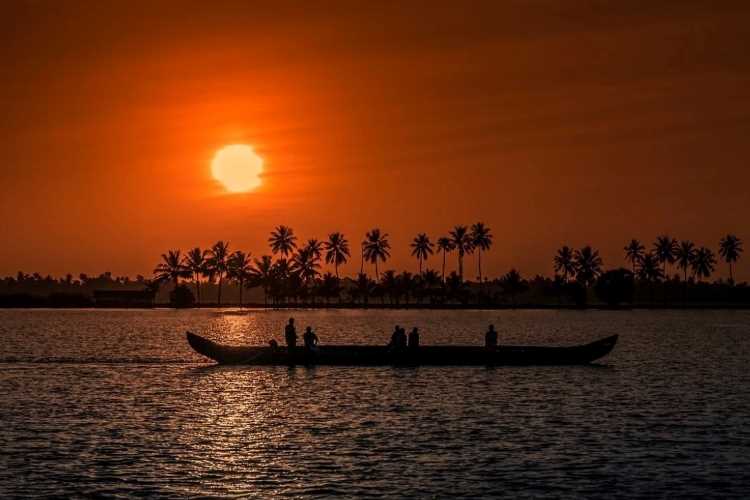
By Sutheeshna Babu S
The Covid-19 pandemic has triggered the most severe crisis in the world economy since the great depression of 1930s. One of the worst sufferers of the crisis is the travel and tourism industry. Borders of at least 90 countries remain closed completely or partially. Another 44 countries have blocked the entry of visitors of certain nationalities. Travel restrictions in 209 destinations across the world has grounded the tourism industry that was in the midst of a dream run. Only a few countries in Europe (7%) and Americas (8%) do not have travel restrictions that came in different forms — overall/partial border closing (43%), complete/partial suspension of flights (27%), destination-wide travel restrictions (23%) and other measures. The cost of these restrictions is huge, especially for low-income countries like India.
The abrupt fall in tourism needs to be seen in the backdrop of the robustness experienced by the industry in the last two decades. In India for instance, foreign tourist arrivals grew at an average annual rate of 9% from 2.54 million in 2001 to 10.56 million in 2018. The only instances of decline were seen after the 9/11 attack in 2001 (-2%), SARS epidemic in 2003 (-1.4%) and the global recession in 2009 (-5.4%). During the period, the average annual growth in domestic tourists was 13.41% — from 220.11 million to 1,854.93 million. The growth in this segment remained robust even during the crises in 2001, 2003 and 2009 and recorded 7.4%, 14.6% and 18.8% increases, respectively. Indian national departures for foreign destinations also observed consistent average growth of 11.12% from 4.56 million to 26.30 million during this period.
READ: Tourism industry key to India’s post-coronavirus revival
By 2019, travel and tourism economy in India became tenth largest in the world, contributing $194 billion to the GDP, a 4.9% increase over 2018. With a remarkable decade behind it, the tourism industry entered 2020 with great hopes. In January this year, foreign tourist arrivals into India was 1.12 million, an increase of 1.3% over January 2019. But the scene changes since the outbreak of the new coronavirus disease. FTAs abruptly dropped to -6.6% in February and further by a whopping -66.4% in March over same months of 2019. The US, India’s second largest market, saw sharpest fall in share from 15.34% in January to 10.03% in March 2020, while the share of Bangladesh rose from 18.68% to 26.07%. Though the monthly data for domestic arrival and outbound departures of Indian nationals are not available, but the numbers since the announcement of the complete lockdown is anybody’s guess.
Emerging trajectories
India’s biggest challenge should be in FTAs, given the bleak forecasts and the geographical spread of Covid-19. Globally, international tourist arrivals are expected to decline 20-30%. Complete travel restrictions prevailing in Asia will hit the tourism industry in the region hard. Extrapolating above forecast over India’s 10.89 million FTA (provisional) in 2019 would mean a fall in arrivals by around 2.18 million to 3.27 million in 2020. It could translate in to losses of $6-9 billion in foreign exchange earnings, assuming per capita earning of $2,755 per tourist estimated for January-July 2019.
It is worrisome that the most important source markets of India are the worst-hit by Covid-19 pandemic. The US, the UK, China, Germany and Russia represented about 1/3 of foreign tourist arrivals in 2018. Top 10 countries together constituted over 65% of arrivals, whereas Bangladesh alone has a 21.37% share. With prolonged uncertainties, it is unclear as how a billion-plus domestic tourist segment will behave in the short-run. The picture is not different for India’s 50 million strong outbound segment.
READ: Indian economy needs a booster shot, not slow medicine
Repercussions of a shattered tourism industry are grave, especially on employment and income in India. The tourism and travel industry accounted for 42 million jobs in 2018. A two percentage point increase has taken the numbers to around 42.84 million in 2019. If the World Travel & Tourism Council’s estimate of 12-14% fall in employment stands true for India, total job losses in the sector could be 5-6 million in 2020. In a sector dominated by MSMEs, the brunt of such massive job and income losses borne by the most vulnerable sections. The women, indigenous communities, low-skilled and socio-economically weaker groups that usually flock around the massive informal sector are bound to suffer most.
The six factors
The pandemic is putting India’s resilient tourism industry to a tough test. Going by the past trends, certain propositions are worth pondering in short- to medium-term. First, manage the anxiety and fear of Covid-19 as well as a trust deficit in things perceived public. Second, seamless travel is crucial and it calls for greater cooperation and coordination at various levels. Such efforts should be backed by focused communication and campaigns to emphasize confidence building. Third, opportunities can be spotted in India’s surging outbound tourist segments. Possibilities are that certain segments of this market may skip outbound travel due to the risk involved. With right prices and product-mix, such groups can be motivated to explore domestic destinations.
READ: India’s Faustian bargain: Alcohol revenues trump health, welfare
Fourth, perceived risks in public transport may push tourists towards private modes to minimise exposure. The big cities may be skipped for smaller cities or rural and nature locations. Fifth, unfolding of Covid-19 seems to have driven the people towards a greater realisation of the nature and living environment. The new understanding may influence human behavior regarding consumption and travel, at least in certain sections of the society. Sixth, with the tourists searching for safer stays and personal care, smaller accommodation units home stays may be in greater demand. In short, faster recovery of tourism demands pursuing multiple possibilities.
(Dr. Sutheeshna Babu S is Nodal Officer, National Institute of Watersports, Goa. Views are personal.)
